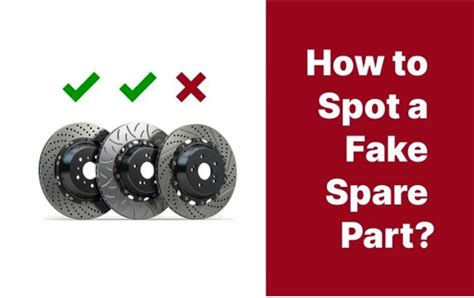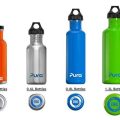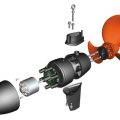The Ultimate Guide to Authenticating Shadow Parts
In the world of automotive customization and performance upgrades, shadow parts have become increasingly popular. These parts, often made to look like original equipment manufacturer (OEM) components, can significantly enhance the aesthetics and performance of your vehicle. However, with the rise of counterfeit products, it’s crucial to know how to verify the authenticity of shadow parts before purchasing and installing them.
This comprehensive guide will delve into various techniques and considerations for authenticating shadow parts, empowering you to make informed decisions and avoid purchasing potentially subpar or fraudulent products. We will explore essential aspects of shadow parts authenticity, covering factors like material quality, branding, packaging, and documentation. Let’s dive into the details and shed light on the intricacies of authenticating these sought-after automotive components.
While you can’t always tell whether a shadow part is fake just by looking at it, there are several things to consider when trying to authenticate a part. This guide will help you make informed decisions about your purchases.
What are Shadow Parts?
Shadow parts are aftermarket automotive components designed to resemble original equipment manufacturer (OEM) parts. These parts are often produced by third-party manufacturers and aim to provide a more affordable or aesthetically appealing alternative to the OEM counterparts. While some shadow parts are of high quality and meet or exceed OEM standards, others may not be as reliable or durable.
Shadow parts are often used for:
- Styling upgrades
- Performance enhancements
- Replacing damaged or worn-out OEM components
The term “shadow parts” is sometimes used interchangeably with “aftermarket parts.” However, “shadow parts” specifically refer to those that mimic the appearance and functionality of OEM parts. In contrast, “aftermarket parts” encompass a broader range of parts, including those designed for specific purposes, such as high-performance applications or customizations.
The popularity of shadow parts is driven by several factors, including:
- Cost: Shadow parts are often more affordable than OEM parts.
- Availability: Shadow parts are readily available from various sources, including online retailers and local auto parts stores.
- Style: Some shadow parts offer unique styling options that may not be available from OEMs.
Why is it Important to Authenticate Shadow Parts?
Authenticating shadow parts is crucial for several reasons:
- Quality: Counterfeit shadow parts may be made from inferior materials, which can compromise their durability, performance, and safety.
- Performance: Fake parts may not function as intended or may even cause damage to your vehicle.
- Warranty: Reputable shadow part manufacturers often offer warranties on their products. Counterfeit parts are unlikely to have any warranty coverage.
- Safety: Using substandard parts can lead to safety hazards and accidents, jeopardizing your well-being and that of others.
Investing in authentic shadow parts not only ensures that you’re getting a quality product but also protects your vehicle and your safety.
What are the Signs of a Counterfeit Shadow Part?
Counterfeit shadow parts can be difficult to spot, but there are several red flags to watch out for:
- Price: If a shadow part is significantly cheaper than the OEM equivalent or other reputable aftermarket brands, it may be a sign of a counterfeit.
- Packaging: Counterfeit parts often come in poorly printed or generic packaging. Look for signs of misspellings, grammatical errors, or inconsistencies in branding.
- Branding: Pay close attention to the branding on the part. Counterfeits may have misspelled or incorrect logos, different fonts, or altered branding elements.
- Material Quality: Inspect the material of the part. Counterfeit parts may be made from lower-grade materials with visible imperfections, such as rough edges, uneven finishes, or inconsistent colors.
The presence of any of these signs should raise a red flag, prompting you to investigate further before purchasing. Remember, it’s always best to err on the side of caution and choose a reputable seller to minimize the risk of buying a fake part.
How to Authenticate Shadow Parts
Here’s a comprehensive guide on how to authenticate shadow parts:
- Research the Manufacturer: Before purchasing any shadow part, thoroughly research the manufacturer. Look for their website, reviews, and testimonials from other customers. Reputable manufacturers will typically have a strong online presence and positive feedback from satisfied customers.
- Check for Certifications: Look for certifications on the part or packaging. Some reputable manufacturers may have their products certified by independent organizations, such as the Society of Automotive Engineers (SAE) or the International Organization for Standardization (ISO). Certifications indicate that the product meets specific quality and safety standards.
- Compare Prices: Compare prices from different sellers. If one seller is offering a significantly lower price than others, it may be a red flag. Be wary of deals that seem too good to be true.
- Examine the Part Closely: Inspect the part for any imperfections, such as uneven finishes, rough edges, or misaligned parts. Compare the part’s dimensions and appearance with the OEM part or other authentic shadow parts.
- Look for Serial Numbers and Barcodes: Authentic shadow parts may have unique serial numbers or barcodes. Check if these numbers are consistent on the part and packaging. You can also try to scan the barcode to verify the product’s authenticity.
- Read the Documentation: Review any documentation that comes with the part, including warranty information, installation instructions, and safety guidelines. Reputable manufacturers will provide detailed and accurate documentation.
By following these tips, you can increase your chances of acquiring authentic shadow parts. However, it’s always best to err on the side of caution and choose a reputable seller.
Where to Buy Authentic Shadow Parts
If you’re looking for authentic shadow parts, here are some reliable sources:
- Reputable Online Retailers: Look for online retailers with positive reviews and a proven track record of selling authentic parts. Reputable retailers will often have a dedicated customer support team and clear return policies.
- Specialized Automotive Stores: Consider visiting specialized automotive stores that specialize in aftermarket parts. They often have a wider selection of shadow parts and knowledgeable staff who can guide you in making informed decisions.
- OEM Dealers: While OEM dealers typically sell only genuine parts, they may have a limited selection of shadow parts. You can inquire about their availability of specific parts.
Remember, it’s always a good idea to research the seller before making any purchases. Read reviews, check their ratings, and ensure they have a clear return policy.
Tips for Avoiding Counterfeit Shadow Parts
Here are some additional tips to help you avoid purchasing counterfeit shadow parts:
- Be Skeptical of Extremely Low Prices: If a shadow part is significantly cheaper than the OEM equivalent or other reputable brands, be cautious. Counterfeit parts often have artificially low prices to attract unsuspecting buyers.
- Don’t Be Pressured into Buying Immediately: If you’re pressured to buy a shadow part without having time to research or inspect it, it may be a red flag. Take your time and make an informed decision.
- Check for Misspellings or Inconsistencies in Branding: Pay attention to the branding on the part and packaging. Look for any misspellings, incorrect logos, or inconsistencies in fonts or design elements.
- Trust Your Gut: If something feels off, trust your instincts. If you have any doubts about the authenticity of a part, don’t purchase it.
Remember that it’s always better to be safe than sorry. If you have any doubts, err on the side of caution and avoid purchasing the part.
What to Do if You Suspect You Bought a Counterfeit Shadow Part
If you suspect you’ve purchased a counterfeit shadow part, here are some steps you can take:
- Contact the Seller: Reach out to the seller and express your concerns. Provide evidence of the counterfeit, such as photos or comparisons with authentic parts.
- Report the Seller: If the seller refuses to cooperate or address your concerns, report them to the relevant authorities, such as your local consumer protection agency or online marketplace.
- Seek Legal Counsel: If you’ve incurred significant financial losses or if the counterfeit part has caused damage to your vehicle, consider consulting with a lawyer specializing in consumer law.
By taking these actions, you can hold the seller accountable for selling counterfeit products and protect yourself from further harm.
FAQ
What are the benefits of using authentic shadow parts?
Authentic shadow parts offer several benefits:
- Higher Quality: They are typically made from superior materials and adhere to stricter manufacturing standards, ensuring durability and performance.
- Reliable Performance: They are designed to function as intended, providing the desired aesthetics or performance enhancements.
- Warranty Coverage: Reputable manufacturers offer warranties on their products, providing peace of mind and protection against defects.
- Safety: Using authentic parts helps ensure your vehicle’s safety and reduces the risk of accidents or malfunctions.
Can I get a refund if I buy a counterfeit shadow part?
Getting a refund for a counterfeit shadow part can be challenging, but it’s not impossible. You can try contacting the seller and explaining your concerns, providing evidence of the counterfeit. However, you may need to resort to filing a dispute with the online marketplace or seeking legal assistance.
What are the risks of using counterfeit shadow parts?
Using counterfeit shadow parts carries several risks:
- Reduced Performance: Counterfeit parts may not function as intended, leading to decreased performance and potential damage to your vehicle.
- Safety Hazards: Counterfeit parts can compromise your vehicle’s safety, increasing the risk of accidents or malfunctions.
- Voiding Warranties: Using counterfeit parts may void your vehicle’s warranty or other manufacturer warranties.
- Financial Loss: You may experience financial losses if a counterfeit part fails prematurely, requiring costly repairs or replacements.
Where can I find information about authentic shadow parts?
You can find information about authentic shadow parts from various sources:
- Manufacturer Websites: Reputable shadow part manufacturers will have websites providing information about their products, including certifications, warranties, and installation guides.
- Online Forums: Automotive forums and online communities often have discussions about specific shadow parts, including tips for authenticating them.
- Automotive Magazines: Automotive magazines may feature articles or reviews about shadow parts, highlighting their quality, performance, and authenticity.
How do I know if a shadow part is a good quality product?
Assessing the quality of a shadow part requires careful consideration:
- Research the Manufacturer: Choose manufacturers with a reputation for quality and a history of producing reliable aftermarket parts.
- Examine the Part Closely: Inspect the material, finish, and construction of the part. Look for any signs of imperfections, such as rough edges, uneven finishes, or misaligned parts.
- Compare Prices and Reviews: Compare prices from different sellers and read customer reviews to get an idea of the part’s quality and performance.
What are some common mistakes people make when buying shadow parts?
Here are some common mistakes people make when buying shadow parts:
- Not researching the manufacturer: Failing to research the manufacturer’s reputation can lead to purchasing subpar or counterfeit products.
- Focusing solely on price: Choosing parts based solely on price can result in buying counterfeit or low-quality products.
- Not inspecting the part thoroughly: Skipping a thorough inspection of the part can lead to overlooking potential defects or signs of counterfeiting.
How can I protect myself from buying counterfeit shadow parts?
You can protect yourself from buying counterfeit shadow parts by following these tips:
- Buy from reputable sellers: Choose online retailers or local stores with a good reputation for selling authentic parts.
- Research the manufacturer: Thoroughly research the manufacturer’s history, reputation, and certifications.
- Inspect the part closely: Examine the part for any imperfections, misaligned parts, or signs of low-quality materials.
- Be wary of extremely low prices: If a part is significantly cheaper than the OEM equivalent or other reputable brands, be cautious.
- Don’t be pressured into buying: Take your time and research before making a purchase.
What is the difference between shadow parts and aftermarket parts?
Shadow parts are a subset of aftermarket parts. Aftermarket parts are any parts that are not manufactured by the original equipment manufacturer (OEM). Shadow parts specifically refer to those aftermarket parts that are designed to look and function like OEM parts.
Table Summarizing Shadow Part Authenticity
| Aspect | Authentic Shadow Part | Counterfeit Shadow Part |
|---|---|---|
| Price | Competitive but not significantly lower than OEM or reputable brands | Significantly cheaper than OEM or reputable brands |
| Packaging | High-quality, professionally printed packaging with consistent branding | Poorly printed, generic packaging with misspellings or inconsistent branding |
| Branding | Correct logos, fonts, and branding elements | Misspelled or incorrect logos, different fonts, or altered branding elements |
| Material Quality | Made from high-grade materials with smooth finishes and consistent colors | Made from lower-grade materials with visible imperfections, such as rough edges, uneven finishes, or inconsistent colors |
| Documentation | Detailed and accurate documentation, including warranties, installation instructions, and safety guidelines | Incomplete or inaccurate documentation with missing information or inconsistent branding |
| Certifications | May have certifications from independent organizations, such as SAE or ISO | May lack certifications or have fraudulent certifications |



